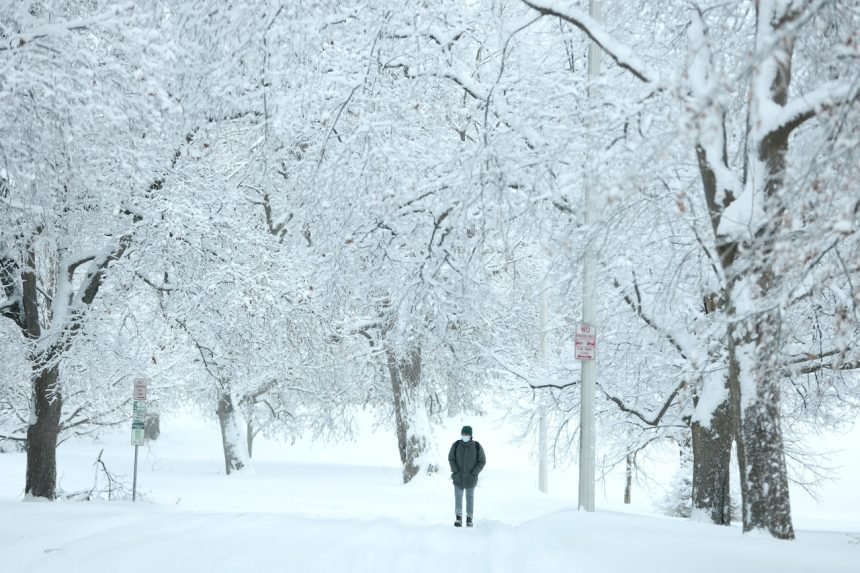Syracuse, N.Y. — The upcoming winter should mark a return to normal for Upstate New York, with heavy lake effect snows and nor’easters combining to bring delight to snowmobilers and skiers.
Snow totals should be similar to last year’s, which was only slightly below normal after five years of much-below normal snowfall.
Syracuse had 105 inches of snow last season. The long-term average is about 120 inches.
“We may have totals that are very similar to that again from last year,“ said Paul Pastelok, a long-range meteorologist with Accuweather. ”I think it’s a healthy snow season for us.”
Before last season, Syracuse had seen five consecutive years of snowfall below 90 inches. In the abnormally warm winters of 2022-2023 and 2023-2024, snowfall was just half of normal.
Upstate New York isn’t alone: Much of the continental U.S. is expected to have typical winter weather this year, according to the Climate Prediction Center, the long-range forecasting arm of the National Weather Service.
In some years, the waters of the equatorial Pacific Ocean are abnormally warm or cool, conditions known as El Nino and La Nina, respectively. This year, there’s a weak La Nina that is likely to fade over the winter, so meteorologists don’t have that key signal to make clearer predictions.
That means other climate factors will come into play, Pastelok said.
“We have a feeling that maybe the polar vortex could have a disruption and bring its cold down,” Pastelok said. “Also, the warm water over the northern Pacific is much warmer than it was last year, and if it gets really amplified, we will probably exceed our snow amounts from last year. That’s something to watch as we get into December and January.”
Other weather factors closer to home could have a big impact on Upstate’s winter, Pastelok said. Temperatures of the Great Lakes are at near-record levels, he noted, and warmer lakes can generate more lake effect snow when the cold air blows over them. In addition, nor’easters that sweep up the coast can swirl around the Northeast, dropping more lake effect snow, he said.
Pastelok said he expects winter to kick into high gear just after Thanksgiving as cold air settles in.
“I think that’s when we start seeing some lake effect and maybe some significant lake effect going into December,” he said. “We feel that we will get into some snow into December, and that will be good for skiers and snowmobilers in the region.”
January 2026 could look like January 2025, with fluctuating temperatures that will bring rain/snow mixtures followed by lake effect snow, he said.

If you purchase a product or register for an account through a link on our site, we may receive compensation. By using this site, you consent to our User Agreement and agree that your clicks, interactions, and personal information may be collected, recorded, and/or stored by us and social media and other third-party partners in accordance with our Privacy Policy.











